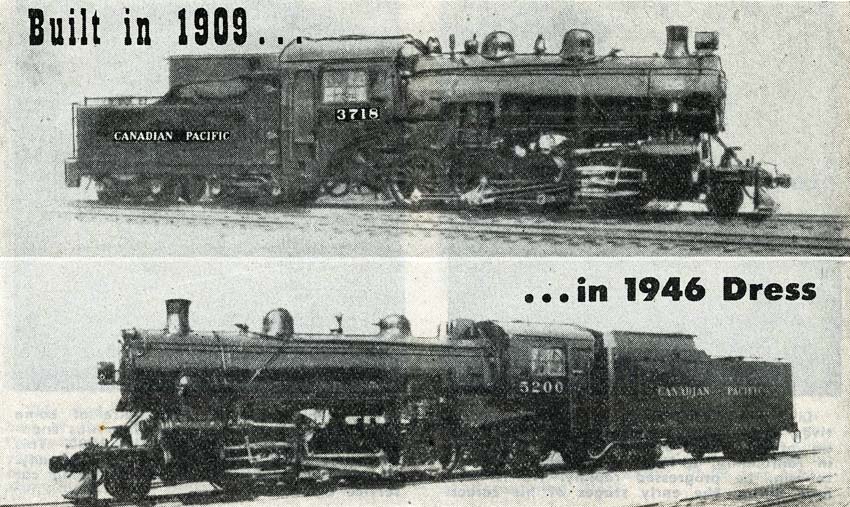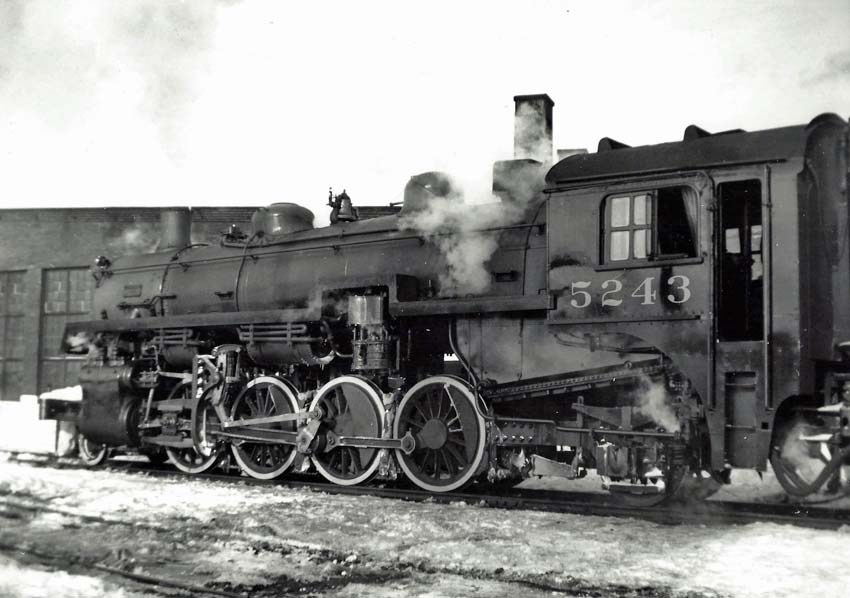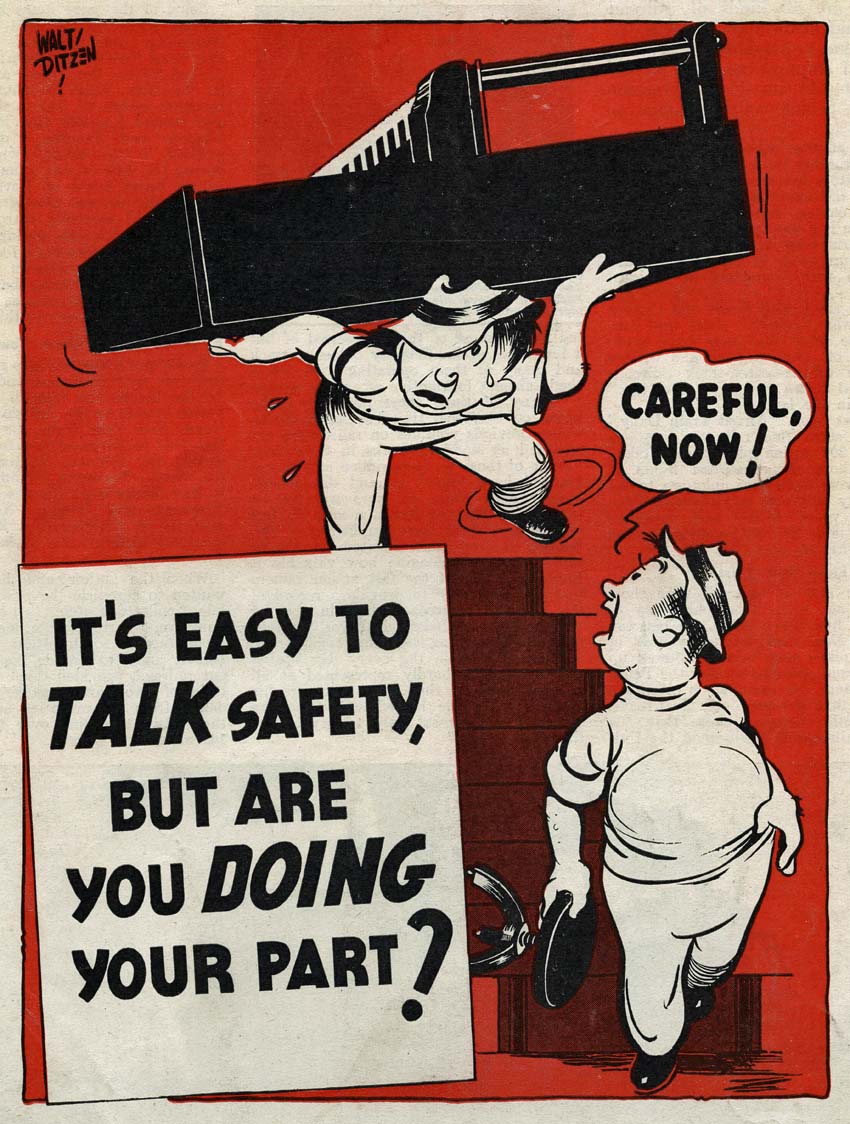
Canadian Pacific Staff Bulletin - February, 1947
Tops in Performance

When a 35-year-old locomotive turns in a better performance after conversion than the engine it was
remodelled to resemble it rates near the top of the standings in the Beat-the-Shortages League.
That is why the Canadian Pacific Railway's mechanical department is feeling so happy over Engine 5200 recently placed in service from Angus Shops in Montreal. Looking at Engine 5200 it is hard to believe that it was converted from a 3700 class locomotive built before World War I. And there are 15 such locomotives in all slated for conversion.
The 5200 has a 2-8-2 wheel arrangement while the old 3700 was a 2-8-0 job. The tender is longer, a trailing truck has been added, a new boiler constructed, and a stoker fitted. This makes the converted engine practically identical in appearance with the latest models of the 5100 class which superseded it as a heavy freight locomotive for main-line service.
Performance of the new 5200 so far has been better than the 5100 which explains the mechanical department's satisfaction. This latest conversion, of course, was helped by the fact that a good base had been provided in the 1920's when all the then 3700's were given new frames, cylinders, motion and superheaters.
At the start of World War II the 3700's were destined for relegation to switching service but they had to be kept on the road to move war traffic. In their converted form they are giving service when shortage of materials and soaring costs make new building in the volume required out of the question.
H B. Bowen, chief of motive power and rolling stock, recommended the conversion which was carried out by F.A. Benger, chief mechanical engineer (locomotive).
Engine 5200 was turned out of Angus Shops on 4 Oct 1946 and it, with 14 additional engines to be delivered in
the next seven or eight months, bearing numbers 5201 to 5214 inclusive, is of the N2 class of locomotives built
in the years 1909 to 1914.

The N2 class locomotives were followed later by P1 class locomotives of the 2-8-2 type. Both classes of
locomotives were of such a weight that they were in the class of power to which stokers are now generally
applied. Stokers could be satisfactorily applied to P1 class locomotives, which had a trailing truck, but not
to the N2 class.
The P1 class locomotive in the 5100 series had given a particularly good account of itself from a performance and availability point of view so the recommendation that the conversion be made from N2 to P1 was quickly approved in November, 1945.
Naturally in making a conversion of this kind there are some improvements made over existing engines, and while changes were kept to a minimum, the principal differences from the present-day P1 class locomotives are as follows:
The boiler pressure has been increased from 190 pounds per square inch to 215 pounds per square inch. The cylinders have been reduced in diameter from 23 inches to 22 inches.
The tractive effort has been increased from 43,400 pounds to 45,000 pounds thus the rating of the engines will be 45 percent instead of 43 percent. The weight on drivers has been reduced from 216,500 pounds to 197,500 pounds.
This Staff Bulletin article is copyright 1947 by Canadian Pacific Railway Limited
 and is reprinted here with their permission. All photographs,
logos, and trademarks are the property of the Canadian Pacific Railway
Company.
and is reprinted here with their permission. All photographs,
logos, and trademarks are the property of the Canadian Pacific Railway
Company.
